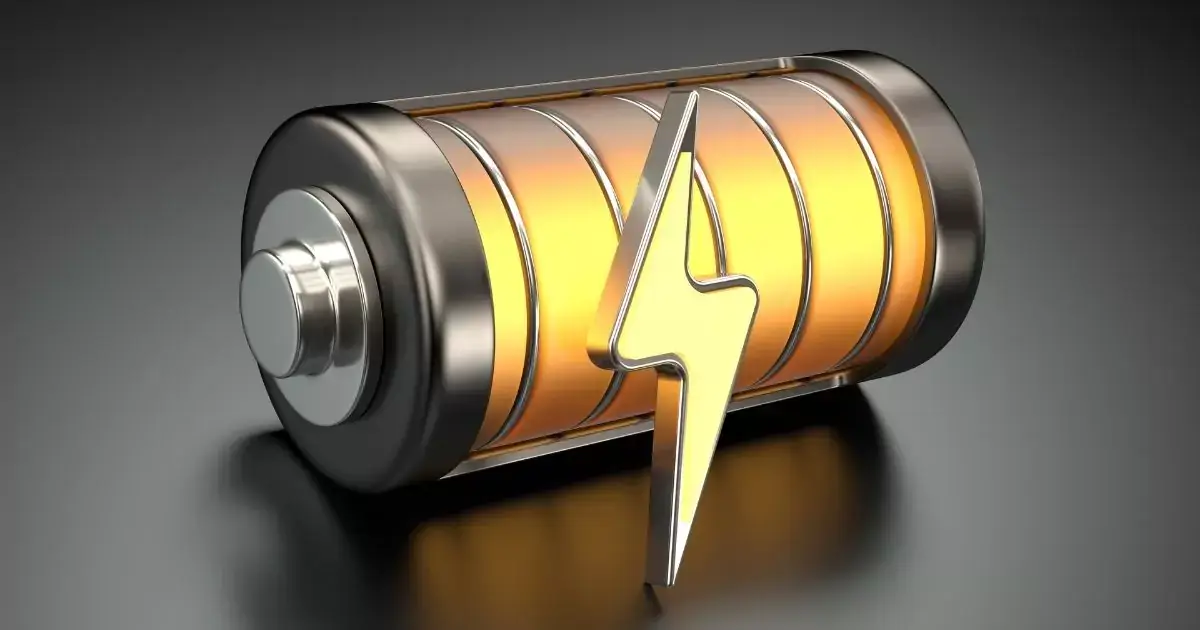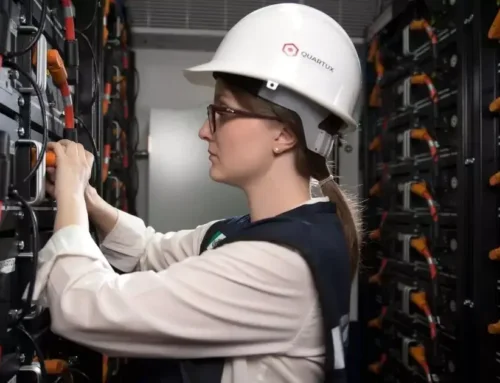If you’ve landed here because you want to know how electrical energy is stored in a battery, you’re in the right place. In this article, we’ll clear up your doubts and also tell you how to calculate the amount of energy stored in a battery.
Batteries are electrochemical devices or accumulators used to concentrate, store, and discharge electrical energy through reversible redox (oxidation-reduction) reactions, making it possible for the total energy stored in a battery to be recharged through electrical sources.
Some batteries serve as means of storing energy in large quantities, allowing for greater utilization of electrical supply. Through lithium-ion battery systems like Quartux’s, where electrical energy is stored in the most innovative and efficient manner, it’s possible to save up to 40% on electricity bills and improve the quality of the energy consumed.
How is Electricity Stored in a Battery?
The storage of electrical energy in batteries begins when they are charged, and sulfate and hydrogen ions change position to chemically store energy inside them. Then, this energy is released in a controlled manner as direct current. In simple terms, these devices have the ability to convert chemical energy into electricity.
The structure of different types of batteries is often very similar: electrochemical cells consisting of two electrodes, one positive (or cathode) and one negative (or anode), which are immersed in electrolytes that allow ions to move between the electrodes so that current flows out of the battery and powers an electrical circuit.
When a battery is discharged, it can be recharged by supplying it with an electric current. When its charge is complete, the chemical difference between its cells is restored, and the battery is ready to supply the stored energy. If you want to know more, we invite you to read this article about how lithium-ion batteries work.
How to Calculate the Total Energy Stored in a Battery?
The voltage supplied by batteries is measured in volts (V), and their charging capacity is measured in ampere-hours (Ah). The charging capacity is the amount of electricity a battery can store, as well as what it can subsequently supply when discharged. The energy stored in a battery is measured in watt-hours (Wh), which are obtained by multiplying the charge (Ah) by the voltage (V).
It should be noted that batteries do not always maintain the same charging capacity, as it decreases over time and with the number of times they are used. There are factors that directly influence the reduction of their energy storage capacity and shorten their lifespan, such as the “memory effect,” which occurs when a battery is charged without a complete discharge occurring first.
Going through a large number of charge and discharge cycles also affects the energy storage capacity of a battery, as well as its exposure to high temperatures or very high intensity demands.
Types of Batteries for Storing Electrical Energy
The difference between the various types of batteries lies in the materials used for their electrodes, as well as the variety of their electrolytic substances. The most commonly used batteries for storing energy today are lead-acid, nickel-cadmium, nickel-metal hydride, and lithium-ion batteries.
Lead-acid batteries have lead electrodes bathed in a sulfuric acid electrolyte and are among the most economical because they are easy to manufacture. As for nickel-cadmium (Ni-Cd) batteries, these are composed of cadmium electrodes and a potassium hydroxide electrolyte. They can be overcharged and withstand a large number of cycles without damage.
On the other hand, nickel-metal hydride (Ni-MH) batteries have a cadmium anode and a metal hydride alloy cathode. Their capacity is greater than that of nickel-cadmium batteries, although their number of cycles is lower, and extreme cold reduces their capacity.
Energy Storage in Lithium Batteries
Lithium-ion batteries are composed of cobalt, lithium, oxide electrolytes, and a lithium salt electrolyte. They are one of the best options available today for energy storage, as their capacity is very high, maintenance is low, and lithium-ion waste is easily recyclable.
Using lithium-ion batteries offers significant advantages: they are much more resistant to discharges, have better energy density, do not exhibit the “memory effect,” are more efficient for energy savings, and have a longer lifespan. While lead-acid batteries have a lifespan of 1500 cycles, lithium batteries last up to 2500 cycles.
Learn more about lithium-ion batteries: Electrical devices that store energy: efficiency and savings.
Do you want to know how to save on your electricity bill with Quartux’s innovative technology? Read “Peak Hours to Save Electricity: Take Care of Your Business Economy.”







